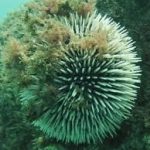An article by Hannah Mackay with The Voice

Photo by Simon Waldram with The Voice
The Canary islands are situated approximately 70 nautical miles west of the Sahara and belong to submarine volcanoes of the Canarian Archipelagos. These Archipelagos along with the Archipelagos of the Azores, form the bio-geographic unit called the Macaronesia (from the Greek word Makaros meaning happy or fortunate and nesia meaning islands). This means the Canaries water have a varied wealth of flora and forna along with a mixture of species from both the Mediterranean and Atlantic. The Coastline of the Canaries provides a plentiful supply of caves, arches, cornices and walls. Fuerteventura and Lanzarote both have a costal shelf surrounding them which in places has a breadth of 30km.



HOW WARM IS THE WATER?
The water of the Islands are Oceanic and benefit from the Canary Island Current which is a descending branch of the Gulf Stream. The current generally regulates the temperature of the surface water. During the winter months water temperature ranges from 17 – 20 degrees and 21-24 degrees in the summer months.
CRYSTAL CLEAR
Surprisingly the Canary Islands produce low levels of Plankton, which makes the waters surrounding them some of the clearest in the world. Visibility can be up to 30 meters or more in some spots. The exception to this is spring time when the vegetable plankton (phytoplankton) flourishes and the water can take on a greenish hue. These amazing conditions (with the exception of a few short storms) provide the ideal conditions for snorkelling and scuba diving all year round.
INTER TIDAL ZONE
The sea area surrounding the Islands can be split into two main sections, the Inter-tidal Zone and the Sub-tidal Zone. Many of us have probably spent hours in the first zone, ‘Inter-tidal zone’ with a bucket and fishing net, and most of us know this area as the rock pools. The species that live in this area have to endure sever environmental variations and some species even manage to survive in the fresh air until high tide when they can return to the water. You’re likely to find goby, blenny juvenile ornate wrasse and sea bream in the pools along with pool shrimp, nettle anemone, crabs and sea urchins.
SUB TIDAL ZONE
The second zone ‘ Sub-Tidal Zone’ is the main zone where scuba diving takes place. This area is distinguished by the lowest tide mark to the maximum depth where light can penetrate enough to support the growth of photophile algae ( around 40-50 meters in the Canaries). The ‘shore line’ falls within this zone and concludes at depths 10+ meters in Fuerteventura. This is the best area for snorkelling. Typically in this zone you are likely to see Parrot fish, Ornate Turkish wrasse, gold lined bream, Atlantic wrasse, Scorpion fish, arrow crabs, baby octopus, boxed puffer, brittle starfish and the sea hare. There are over 553 species of fish reported in the Canaries so this list is by no means extensive.
If you would like to see the underwater world for yourself, then why not book a Discover Scuba Session and see first hand, what wonders await!
 The Voice – Fuerteventura Keep up to date in Fuerteventura with The Voice Magazine
The Voice – Fuerteventura Keep up to date in Fuerteventura with The Voice Magazine






